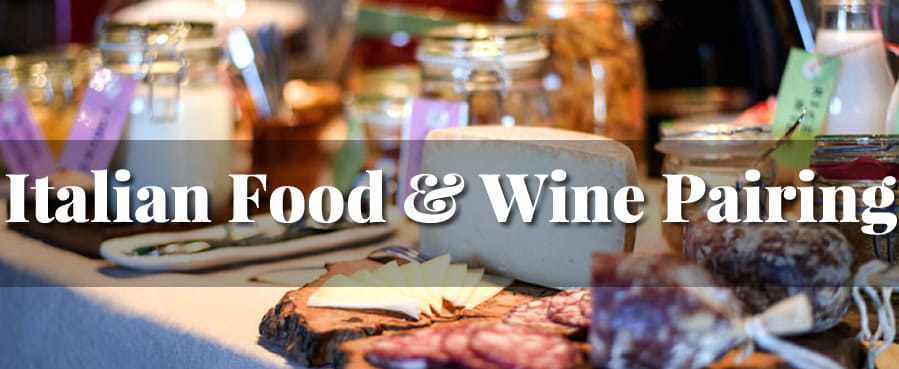Eating what you like with a glass of your favorite wine is a great idea; eating should be a pleasure. But food and wine pairings are not a solitary affair. When was the last time you saw a restaurant full of people eating alone? For most of us, it is a shared pleasure, one which everyone is seeking pleasure, not just yourself.
To entice others, we have to think like a sommelier, and that means adopting a few rules. Some food goes better with certain types of wine, and there is a tug-of-war between science and tradition in every successful match. Pairing food with wine is a creative endeavor as much as a chemistry experiment. We will cover many details here. If you are interested in delving deeper, check out our food and wine pairing classes.
The following ten rules are a good starting point to take your pairings in the right direction, approaching the craft of wine and food pairing with the jaded eye of a realist and the lilt of a folk singer.
#10 Pair by Weight
No matter if you’re talking about salads or stews, you can intrinsically determine the overall weight of a dish, especially when comparing it to another. A mixed green salad is lighter than a more substantial salad with feta cheese, roast peppers, and olives. Grilled chicken breasts are lighter than roast chicken. The sauce, dressing, amount of fat, the calories, they all (literally) weight in.
You can also measure wine by perceived weight. A California Zinfandel is weightier than a Sonoma Merlot; Merlot is heavier than a Carneros Pinot. Heavy reds match better with heavy dishes.
For whites, oak-aged wines from warm weather are bigger than ones aged in stainless-steel. Heavy whites go better with cooked fatty fish and poultry, while lighter ones are better with light plates of sashimi and sushi, for example.
#9 Pair by Cooking Method
The way you cook something alters its pairing possibilities. A grilled lobster tail might work better with a full-bodied Chardonnay; poached lobster will be nicer with a subtle Pinot Gris; lobster ceviche will play deftly with a coastal Sauvignon Blanc.
Like with rule #10, grilled or roasted food can stand more assertive wines, with higher tannin and alcohol. Will you steam your fish filet? or will you glaze and roast it?
#8 Pair to Complement
Leaving weight aside, you can marry food with wines that have similar flavors and aromas. Earthy Burgundian Pinot Noirs can have notes of undergrowth and mushrooms, making them a complementary match with mushroom-based dishes. A creamy, buttery, oaked Chardonnay will pair with equally creamy sauces.
Cabernet Sauvignon can taste like bell peppers so grilled peppers on the side might enhance any pairing. The same principle applies to Syrah and its black pepper aromas, which will beautifully enhance a steak au poivre.
#7 Pair by Contrast
On the other hand, you can contrast flavors looking for harmony. You don’t eat spicy food with a spicy wine; you pair it with sweet wine. Complement oysters au gratin with a creamy white wine, or contrast it with a tangy, crisp one. It’s up to you. Sour balances sweet, sweet balances bitterness. You get the idea.
#6 Pair Local
Local food evolved to harmonize with local wine. Especially in regions with long winemaking tradition. Tomato based Italian dishes will pair nicely with a Primitivo, a plate of choucroute garnie is very enjoyable with Alsatian whites. Beef bourguignon loves earthy Pinots and cured meats love Rioja. Even new world cuisines are shaped by old world cooking; do your research and find common ingredients.
#5 Pairing Dessert
Desserts are ambitious to pair. Go for a sweet wine as long as the wine is sweeter than the dessert itself, or else it will taste dull. In a bold move, you can pair chocolate desserts with dry red wine, but it must be rich and jammy, think Aussie Shiraz or old vine Zinfandel. When possible, add red berry coulis or marmalade to any dessert to help strengthen the bond mirroring the fruity aromas in the wine.
#4 Pair with the Occasion
Brut Champagne tastes odd with wedding cake, but the occasion calls for such a pairing. No one wants to toast with a Moscato in the most important day of their lives even if the wine will taste better with cake than Champagne. A value-oriented Cava would be a reasonable suggestion for a toast at the office holiday party; you can save the Prestige Cuvée for some other time.
#3 Pair with the People
Don’t just think about the occasion, think about the people. Sommeliers often forget that they’re selecting wines for the guests, and not for themselves. Asses the wine knowledge, experience, and expectations of your audience and pick the correct wine. A Grand Cru dry Riesling might work beautifully with coconut shrimp, but if your friends are all beer drinkers, pop open a less contemplative wine, or even better, a fancy beer.
#2 All Around Pairings
When in doubt, pour Champagne. The tight acidity and freshness of the sparkling wine will pair well with any dish whether in contrast or as a compliment. A palate cleanser if you wish, Champagne elevates any dining experience, from starters to dessert.
#1 Experiment
There’s no perfect pairing, every palate is different. With so many variables, even a well-thought pairing might not work out as planned. But don’t worry, this only means that you can find unexpected, successful pairings with a little creativity. Put on your scientist hat and experiment.
The post 10 Tips For Food and Wine Pairings appeared first on Wine School of Philadelphia.
source https://www.vinology.com/10-tips-for-food-and-wine-pairings/






